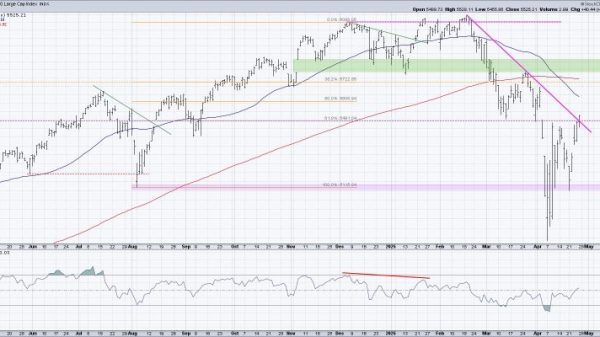Red Lobster has filed for voluntary Chapter 11 bankruptcy in Florida, the company confirmed in a statement late Sunday night — but it intends to keep its locations open.
The 56-year-old seafood chain, the largest of its kind in the U.S., said it would ‘drive operational improvements, simplify the business through a reduction in locations, and pursue a sale of substantially all of its assets as a going concern.’
The company said it lost $76 million last year and had seen a 30% drop-off in guest count since 2019.
As part of its reorganization, Red Lobster has agreed to sell its business to a new entity wholly owned and controlled by its lenders, a so-called stalking horse arrangement. The company said it had received a $100 million financing commitment to fund ongoing operations.
The bankruptcy petition lists the company’s assets as worth between $1 billion and $10 billion and lists debt obligations within the same range.
The chain had recently announced it was closing some 99 locations across the country.
But the company stressed that its remaining restaurants will stay open during the bankruptcy process and that it has been ‘working with vendors to ensure that operations are unaffected.’
In its bankruptcy filing, Red Lobster stated it employs 36,000 workers who serve some 64 million customers per year.
Jonathan Tibus, the company’s CEO, said: ‘This restructuring is the best path forward for Red Lobster. It allows us to address several financial and operational challenges and emerge stronger and re-focused on our growth.’
Founded in 1968, Red Lobster grew to nearly 700 locations by 2019. But it failed to regain its footing after the pandemic. Between 2019 and 2023, U.S. sales fell 13% on net. The privately held company has since struggled under its debt load, while also seeing payments to vendors disrupted.
That’s coincided with a stream of executive turnover announcements, and ill-fated strategic initiatives including an all-you-can-eat shrimp offering that resulted in heavy losses.
In the bankruptcy filing, Tibus cited ‘the difficult macroeconomic environment, a bloated and underperforming restaurant footprint, failed or ill-advised strategic initiatives, and increased competition within the restaurant industry’ as the reasons for its struggles. He highlighted the fact that dining costs have outweighed groceries, and that 50% of U.S. states had increased their minimum wages, further reducing Red Lobster’s profit margin.
Perhaps the most prominent of the poor decisions was an ‘endless shrimp’ offering by a previous CEO that Tibus said ultimately cost the company $11 million. The circumstances that led to the promotion are under investigation, Tibus said.
The company has also seen multiple owners over the past five years; most recently seafood conglomerate Thai Union had taken a controlling stake, but it announced in January its intention to sell it.





























